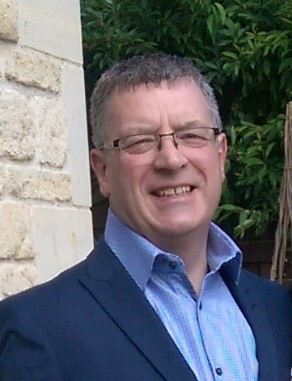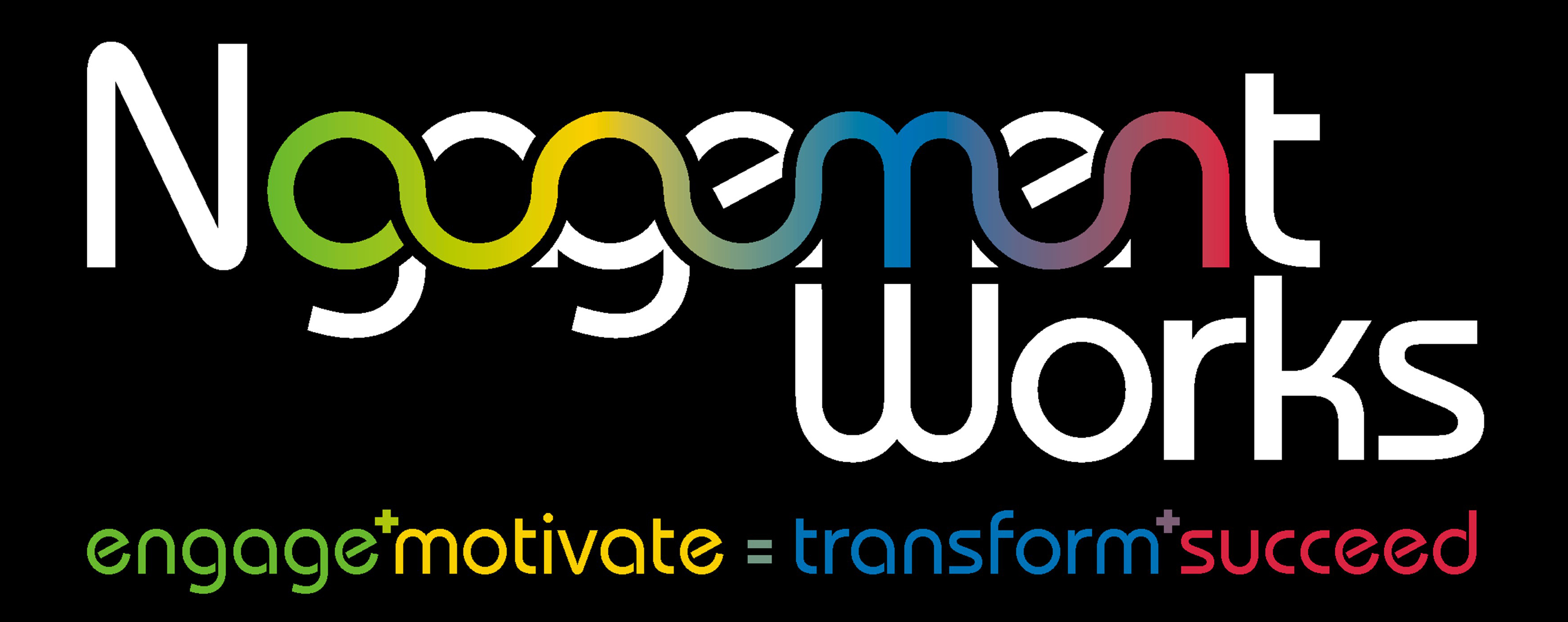I’d like to introduce our PIFPAL (Pay It Forward Pal),
Tony Reeves, Director at Level 7 Expertise Ltd.
In work, Tony is passionate about making a difference where others say it can’t be done and outside work, he has a passion for music.
Tony says that the song that sums up his life is “Summer of 69” by Bryan Adams and his claim to fame is that he once appeared on Westward TV as a child, singing in a group with a local entertainer! Thankfully this was before YouTube!!!
You can find out more about Tony via his LinkedIn Profile.
Which of the 16 Team DyNAmics© Elements does your post support?: ROLES AND SKILLS
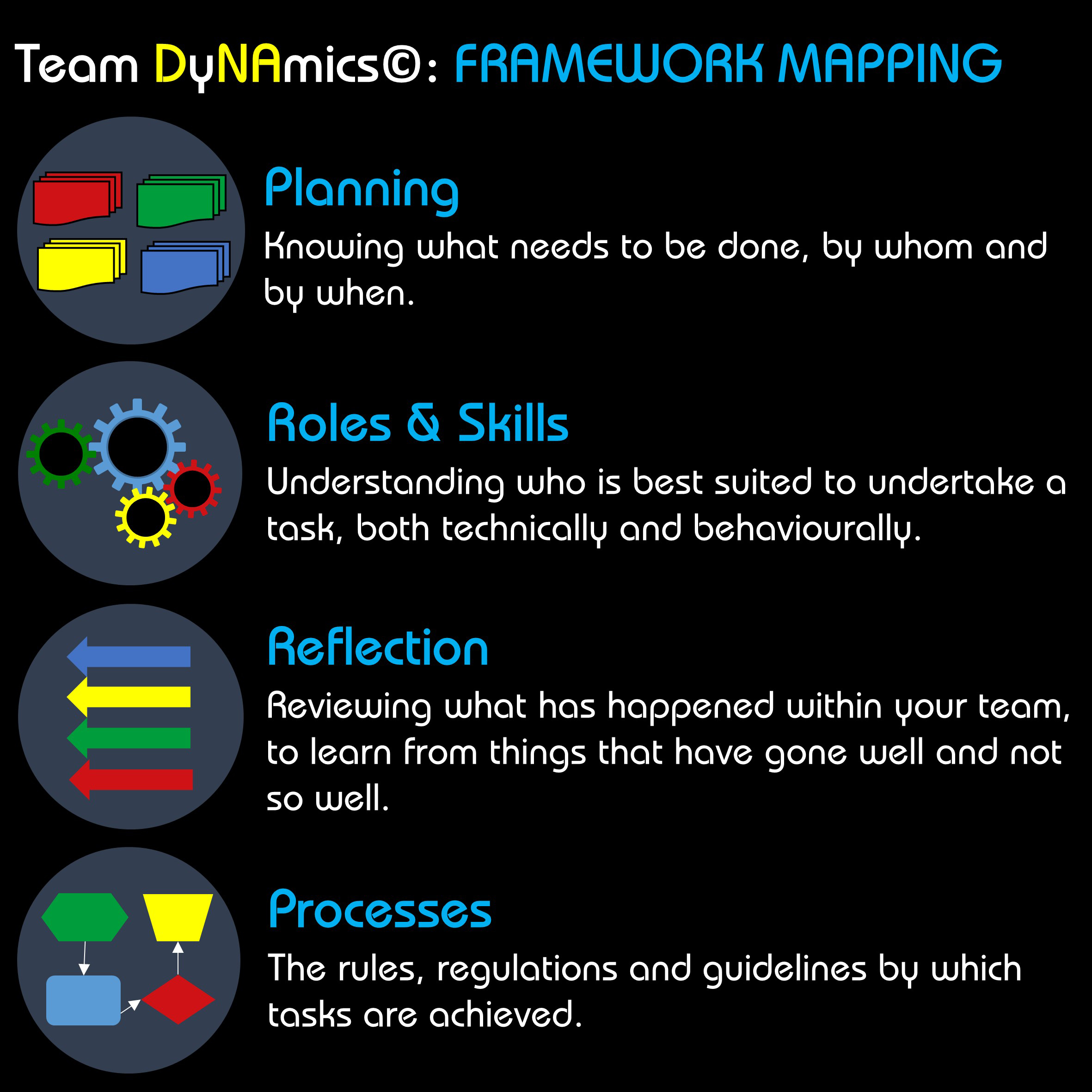
How long will it take?: 1 hour in total
Resources required: A whiteboard and multiple coloured whiteboard markers. A camera or phone to capture the results. Your team (with no nominated leader). A willingness to be open, honest and accepting of feedback. A willingness to take action on the results
What to do:
First, you must decide as a group the four key characteristics of what makes you good at what you do; this alone can generate a lot of discussion so it would be wise to make this decision ahead of time. As we are a consultancy business, we picked:
Technical Subject Matter Expertise, Consultancy Skills, Project,Programme and Portfolio Management, Business Development.
It’s important that each team member agrees that the categories are correct. Egos and seniority are left outside the room! This works best when everyone acts as peers, regardless of their actual position in the team or company. You can use more than four categories if you wish, but we found beauty and effectiveness in the simplicity of the model.
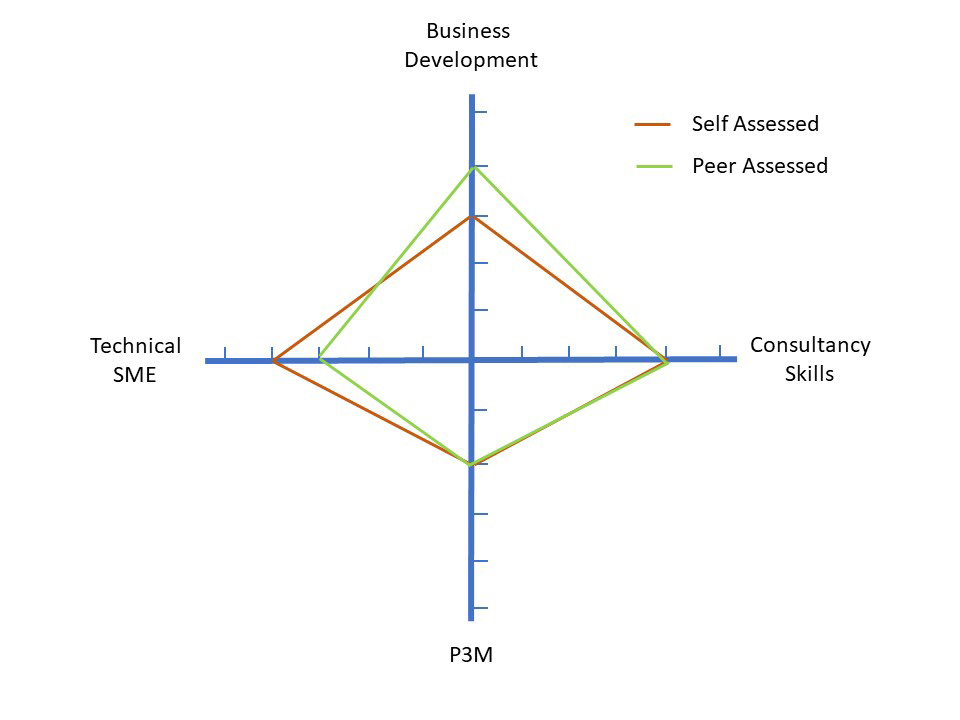
Each team member then carries out a quick self-assessment and assigns themselves a grade for each category. It’s important that this is not discussed or challenged, and must be as honest an appraisal that the individual can provide. The grades are marked on the axes, and joined to make a simple trapezoidal shape.
Then the remainder of group should discuss and agree their collective grade for each category for the individual, and mark them on the axes, again joining the dots to make a trapezoid. Even with a simple 0-5 scale, we found that it is rare for the two shapes to be identical!
The individual and group should then discuss the scores and in particular pay attention to any major differences of opinion. It is interesting to see who under- or over-values their grades! This discussion should be moderated by the group and not the most senior person in the room, as this can throw up some real surprises. The exercise can also indicate where our people want to be better at a particular skill or professional practice, as their self-assessment can be led by their aspirations rather than full self-knowledge. The exercise is then repeated for each member of the team.
It’s important to keep the discussions short and to the point as one hour can pass very quickly!
Once the full set of diagrams have been discussed and agreed, the last step is to pick one single area for each person in which development would either benefit the individual, the team, or (ideally) both; this naturally feeds your training and development programme. This can also pose some interesting questions as the team’s view of what would benefit the collective performance may not match with the individual’s thinking. This is an important point as the whole exercise is designed to focus on improvement to team performance.
Any other relevant information?
I would say that this exercise brought us much closer together as a professional, supportive team and led to a marked and measurable increase in performance.
Although this was a classroom exercise using a whiteboard, the discussion alone was worth the investment in time.
I hope you have fun with this exercise and that your teams see the benefit of contributing as much as they can. The adage that ‘you only get out what you put in’ is very true…
Many thanks to Tony for Paying It Forward.
If you’ve found this article of interest and value, please use the Follow option in the right side panel to ensure that you are informed of future posts plus, help others and Pay It Forward, by sharing it with those who may find it useful.
Would You Like Help Others And Feature In Pay It Forward?
If you have some effective learning that would help either individuals or a team and want to be featured in the Pay It Forward Initiative, I’d love to hear from you. The only criteria are (1) the learning is effective, (2) it takes no longer than an hour to undertake, (3) you don’t need too many resources, (4) you are able to share it freely.
If you do, please email me via nick@ngagementworks.com or give me a call on 00447966306903 or use the Contact Form
Wishing you continued happiness and success in both work and life.
Yours behaviourally, Nick
